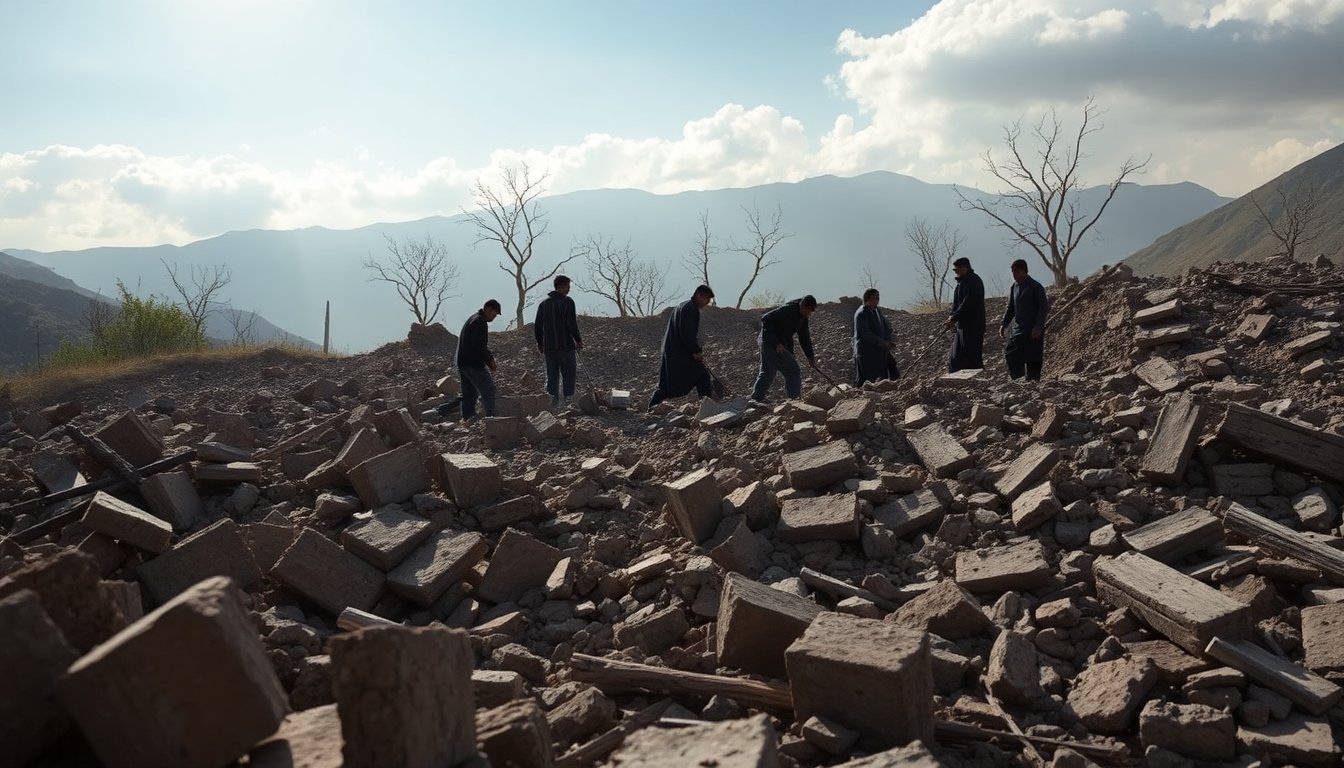Table of Contents
The recent earthquake in southeast Afghanistan has left a devastating impact on the region, resulting in over 2,200 fatalities. This catastrophic event has not only destroyed homes but has also shattered the lives of countless families. Following a magnitude 6.0 tremor, residents in Kunar province are now grappling with immense loss as they attempt to rebuild their lives amidst the devastation.
Understanding the Devastation
In Kunar province, the earthquake’s epicenter, entire villages have been reduced to rubble. Survivors are facing profound grief, having lost loved ones and their homes. The World Health Organization (WHO) has reported that at least 6,700 homes are destroyed, leaving many families without shelter. The situation is dire, as survivors like Gul Rahim recount heart-wrenching stories of loss. Rahim tragically lost 63 family members, including his five-year-old daughter, Fatima, during the chaos of the quake.
As aftershocks continue to shake the region, fears of further casualties remain high. Many communities are isolated due to treacherous roads and landslides, which hinder access to essential aid. Relief efforts are challenged by these ongoing aftershocks, creating a race against time for rescue workers searching for those still missing.
The Urgent Needs of the Survivors
With winter approaching and the region known for heavy snowfall, the need for adequate shelter has never been more urgent. Survivors, including Rahim, who are currently living in tents, are calling for immediate assistance. They have lost everything, including livestock and basic necessities. The WHO has launched an appeal for $4 million to provide life-saving health interventions and support for water, sanitation, and hygiene activities.
Local volunteers emphasize the immediate need for food, safety, and medical supplies, particularly for children. As time passes, hope is dwindling, and the number of missing persons continues to rise, suggesting that the official death toll may not fully capture the scale of this tragedy.
Geological Context and Future Implications
Afghanistan’s geographical location makes it particularly vulnerable to seismic activity, situated at the convergence of the Indian and Eurasian tectonic plates. The recent earthquake is not an isolated incident; it follows significant tremors in the region, including one in Herat province just last month and another in Paktika the year prior. Understanding these geological risks is essential for future preparedness and response strategies.
As affected communities begin the long journey to recovery, mobilizing resources and support from both local and international organizations is crucial. The resilience of the Afghan people is commendable, but without substantial aid and infrastructural support, rebuilding will be an uphill battle.


